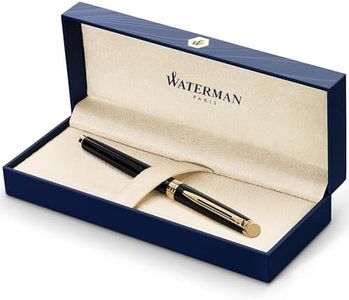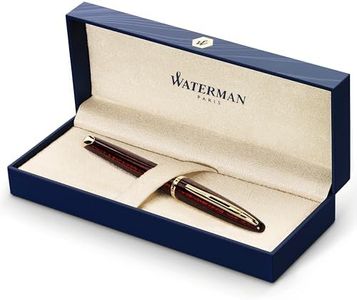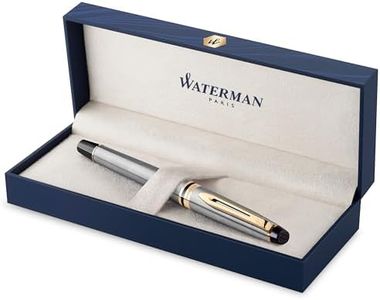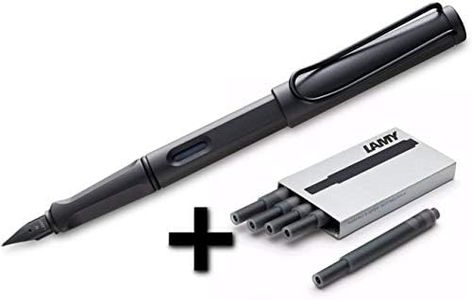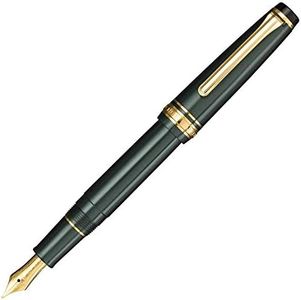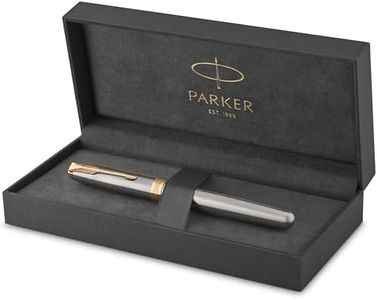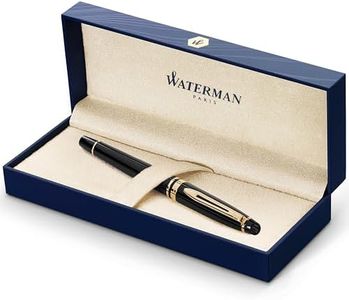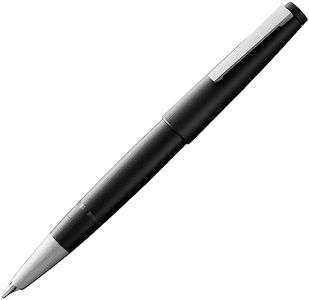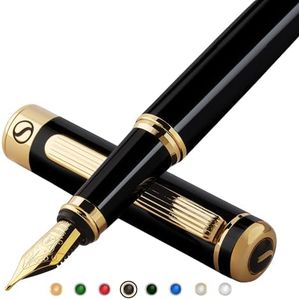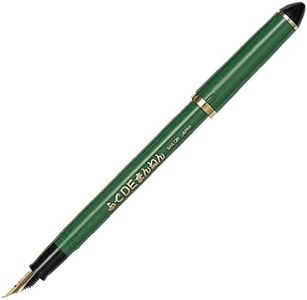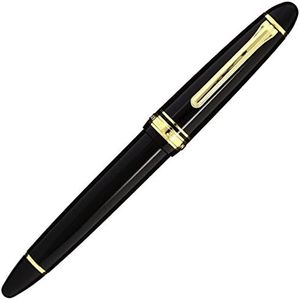We Use CookiesWe use cookies to enhance the security, performance,
functionality and for analytical and promotional activities. By continuing to browse this site you
are agreeing to our privacy policy
10 Best Fountain Pen For Drawing
From leading brands and best sellers available on the web.Buying Guide for the Best Fountain Pen For Drawing
Choosing a fountain pen for drawing is an exciting process, as the right pen can really boost your creativity and enjoyment. Unlike regular writing pens, fountain pens for drawing let you create expressive lines and textures. When picking your pen, think about the types of drawings you'd like to do, the line detail you need, and how comfortable a pen feels in your hand over time. Getting familiar with a few key features will help you find a pen that fits your style and artistic needs.Nib Type and SizeThe nib is the metal tip of the fountain pen that touches the paper and makes the line. Its size and shape really affect your drawing since different nibs offer various line widths and flexibilities. Fine and extra-fine nibs are great for detailed lines and cross-hatching, making them perfect if you like intricate work and tiny details. Medium and broad nibs create thicker lines, helpful for bold sketches or filling areas with ink. Some nibs, like flex or italic, offer line variation depending on pressure or direction, adding expressiveness to your art. To choose the right nib, think about your artistic style: more detail needs a finer nib, while expressive sketches benefit from broader or flexible ones.
Ink Flow and Feed SystemThe feed system controls how ink travels from the reservoir to the nib. A consistent and smooth ink flow is essential, especially for drawing, so lines remain unbroken and inky. Pens with wetter feeds lay down more ink, which is useful for bold, dynamic lines but can smudge if you move your hand across the paper. Drier pens offer more control for intricate details or for artists who like to layer ink. If you sketch quickly or make lots of continuous marks, a steady ink flow is important. For slow, detailed work, a slightly drier pen might suit you better.
Nib Material and DurabilityNibs can be made from stainless steel, gold, or other alloys. Steel nibs are usually quite sturdy and great for beginners or everyday use, providing a reliable drawing experience. Gold nibs can flex more for varied line widths but are often softer, requiring more gentle handling. Artists who draw frequently or want a pen that lasts should look for durable nibs that can withstand repeated use without losing shape. If you’re rough on your tools or sketch vigorously, a sturdy steel nib is a safe choice.
Pen Ergonomics and ComfortComfort is crucial, especially during long drawing sessions. Factors like pen weight, grip shape, and barrel thickness affect how comfortable the pen feels. Lighter pens are easier on the hand for long periods, while heavier pens may feel more solid and substantial. A thicker grip can reduce hand fatigue, but some artists prefer a slimmer pen for finer control. If you often draw for hours, look for a pen that feels comfortable and balanced in your hand.
Filling MechanismFountain pens hold ink in different ways, such as cartridges, converters, piston-filling, or eyedropper systems. Cartridges are the easiest to use and replace, ideal for those who want minimal fuss. Converters and piston-fillers allow you to use bottled ink, which is more economical and offers a wider range of colors and properties. Eyedropper pens hold lots of ink, suitable for extensive sketching sessions. If you love trying different inks or draw a lot, a pen compatible with converters or with a high-capacity filling method is recommended.
Ink CompatibilityNot all fountain pens work well with certain inks, especially waterproof or pigmented inks popular among artists. Some feeds and nibs can clog with thicker, specialty inks. For drawing—especially if you plan to use washes or mixed media—it’s important to check if your pen can handle your favorite inks. If you intend to use waterproof ink for watercolors, look for pens specifically known for their clog-resistant capabilities, but always clean the pen regularly to keep it in good shape.
